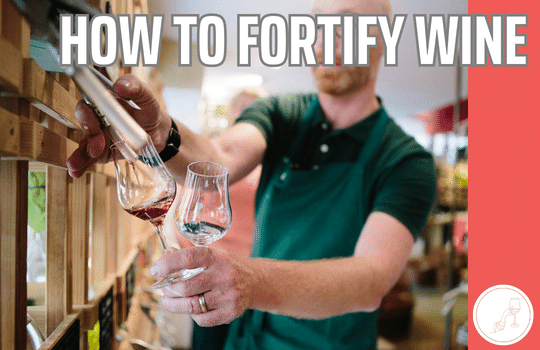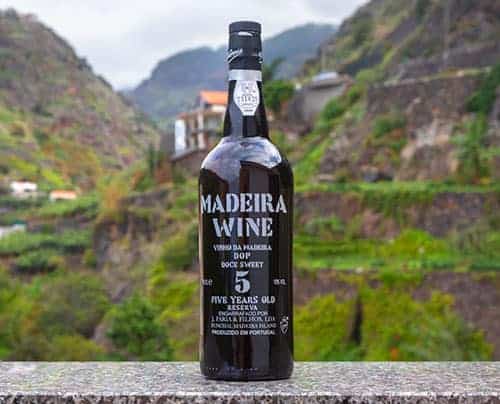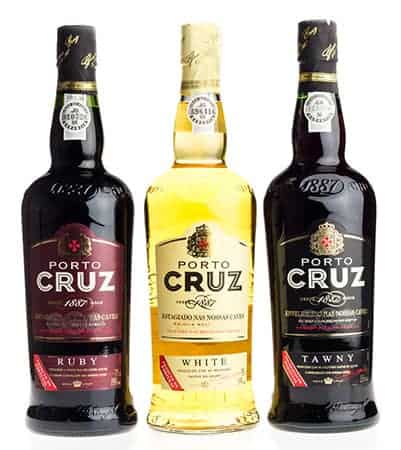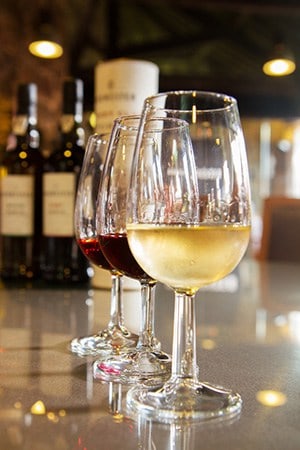How To Make Fortified Wine [3 Ways to Fortify Wine]

Compared to unfortified wines, fortified wines are rather unpopular.
Given their current demand, it is hard to believe that in the past, these wines dictated the trends of wine commerce.
Nowadays, many wine lovers only recognize the most famous names, such as Porto, Madeira, Marsala, and Jerez.
The decline of these wines was probably caused by the negligence of winemakers. Altering their flavor, using poor quality alcohol and using scarce wines in the production, fortified wines gained an unfortunate fame.
Their period of glory was followed by an incredible decline and only in the late 80s, some wineries started to consider re-evaluating the quality of this exceptional beverage.
Now, more and more enthusiasts approach this drink with extreme interest and many even want to know how to make fortified wine.
If you’re one of them, there’s good news! Fortified wine is easy to make.
You’ll just have to pay attention to the quality of the ingredients and possess some basic math knowledge.
A Quick Introduction to Fortified Wine
The term fortified wine refers to a wine whose alcohol content has been increased at some point during the winemaking process.
Often called “liqueur wine”, this type of wine has a complex structure which is not determined only by the quality of the grapes, but also by the quality of the spirit used to fortify it.
In broad terms, fortified wines have an alcohol concentration between 15% and 22%, although there are stronger fortified wines.
The history of fortified wine is rather recent and many connoisseurs even consider fortified wine a modern invention.
The first documents mentioning this beverage date back to the seventeenth century and it was originally traded by winemakers in the rich countries in northern Europe.

England was one of the main consumers of this Mediterranean delight and all famous fortified wines, including Marsala, Jerez, and Port, emerged more or less in the same period.
The creation of fortified wine was a result of the need to preserve wine for a longer time rather than an attempt to create an innovative drink.
In fact, winemakers started adding spirits to preserve the wine during transport thanks to the preserving virtues of alcohol.
For this reason, it was up to the winemakers to decide when and how much alcohol to add during the vinification process.
This lack of rules makes fortified wine a versatile drink. In fact, this is how the strong differences between Marsala, Madeira, and Jerez are explained.
Nevertheless, this is also why fortified wines are hard to understand and appreciate.
Tasting a fortified wine requires greater attention and a higher sensorial capacity. It takes time to identify and understand the complex aromas and flavors of these unique wines.

How to Fortify Wine: 3 Ways
There are a few ways of making fortified wine.
You can add spirit to a wine-base, in which case you can technically use any type of sweet wine you like, or make fortified wine from scratch, starting it from grapes or grape juice.
It’s easy to imagine that there are fundamental differences between the two techniques, but if you want to achieve the best results, it’s recommended to start the wine from grapes or selected grape juice.
The winemaking process is almost identical with that followed when making a traditional wine.
The only difference is the addition of alcohol at some stage, depending on what type of fortified wine you want to obtain.
Alcohol can be added at the beginning of the fermentation process, during fermentation, or after fermentation. Let’s have a detailed look at each method of fortifying wine.
Related: We explain how to sweeten wine in our latest guide to winemaking.

1. Add Alcohol Before Fermentation
Many winemakers in the Americas add alcohol before the fermentation process begins.
Alcohol is added to the unfermented grape juice after its sweetness is measured with a dedicated tool.
Based on the sugar concentration of the juice is possible to determine how much alcohol to add, based on how strong you want the fortified wine to be.
For example, if the initial sugar concentration of the grape juice is 22% and you want to obtain a fortified wine with an alcohol concentration of 18%, you’ll have to add 9,5 parts of 95% alcohol to 77 parts of grape juice.
The main problem with this method is the high alcoholic concentration at the beginning of the fermentation.
If you’ve ever made wine, you probably know that alcohol kills yeasts, that’s why fortified wines made with this method don’t have a fine structure and are usually very alcoholic.
The best grape varietal to consider if you still want to give it a try is Muscat.

2. Add Alcohol During Fermentation
Popular in many famous wineries, this method is used for two purposes.
On one hand, alcohol may be added to a traditional wine only to stop fermentation, in an attempt to achieve a sweet wine or to make a fortified wine.
Obviously, the quantity of alcohol added will depend on your purpose.
Like said above, alcohol kills yeasts. Therefore, regardless of why you add it, this action will interrupt fermentation.
This will leave a residual sugar in a variable percentage, depending on the initial sugar concentration of the juice, and the method is used to obtain one of the most famous fortified wines in the world, Port.
To determine how much alcohol to use, just measure the alcoholic concentration of the wine you’re making and calculate the quantity of alcohol to add, based on the final alcoholic concentration you want to achieve.
3. Add Alcohol After Fermentation
Lastly, you can fortify a wine by increasing its alcohol content after fermentation.
You can do this either with your wine or with a quality wine bought from a winery, but if you want to brag in front of your friends, just make the wine yourself.
To know how much alcohol to use, just measure the alcoholic concentration of your wine.
It is recommended to use food-grade alcohol 95%, to avoid altering the flavors and aromas of the wine. In the alternative, you can fortify your wine with brandy.
Simply calculate the quantity of alcohol to add, based on the final concentration you want to achieve, mix the two liquids and let the wine mature in an oak barrel or glass carboy for about six months before bottling.
Some of the most famous examples of fortified wines made with this method are Marsala, Jerez, and Madeira.
Final Thoughts
Fortified wine is a complex beverage that needs deep knowledge and true interest to be understood. Nevertheless, this is one of the finest drinks to pair with your desserts.
Making fortified wine is not rocket science. However, like for all types of wines, the process requires the use of high-quality ingredients and the following of precise steps.
The result? A noble wine that will conquer the hearts of those who taste it!
